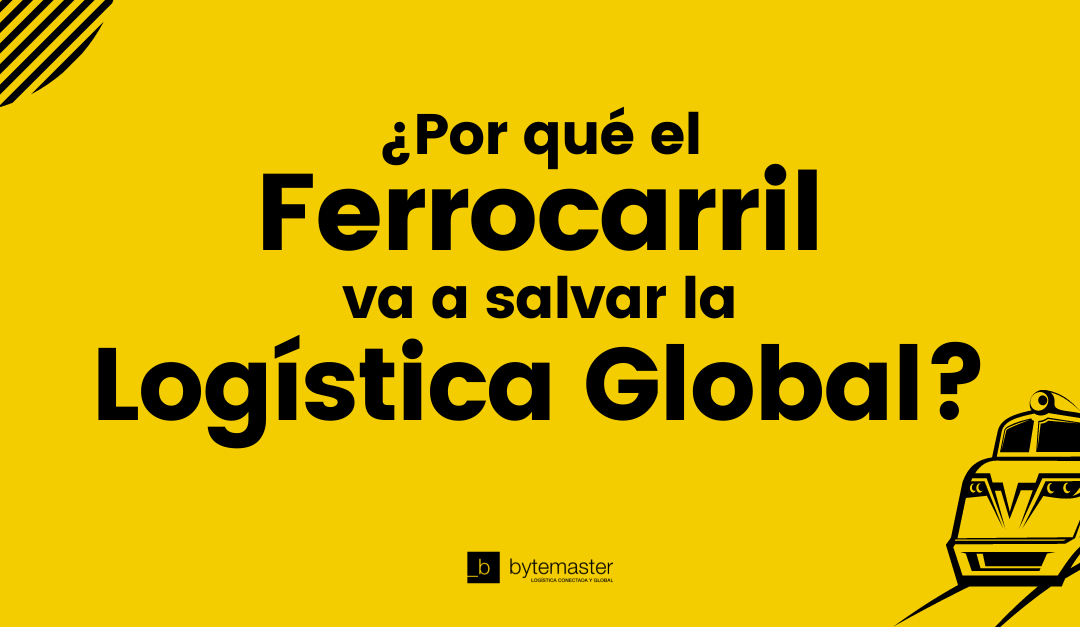Can rail save global supply chains?
The European freight rail industry has experienced a steady decline over the past 70 years. However, the balance could be about to change. In addition to the EU's ambition to reverse the trend, new factors position rail as a potential solution to the logistics crisis.
There are two ways to interpret the supply crisis affecting every corner of the world today: as a transitional point towards the old normal or as a turning point towards a more sustainable future.
Reflecting on the latter vision, as early as 2011 the European Commission saw rail as an ideal solution to meet the environmental challenge. Along these lines, it stipulated that by 2030, 30% of the freight transported by road should be transferred to other modes, such as rail.
Such objectives have recently been ratified by member states such as Spain, after announcing an investment of 1.5 billion euros to improve intermodal transport.
Now, however, the challenge is greater. Immersed in an unprecedented situation, more and more voices are calling for increasing the weight of rail in the logistics equation. Not surprisingly, the events of recent months have corroborated the potential of this modality.
Logistics system in the eye of the hurricane
The slow but sure growth forecasts position rail freight in line with the goals of building a greener, more digital system that is resilient to future crises.
In fact, this last point has brought to the forefront the mode of transport that is of most concern to the European Union.
The pressure that global supply chains are coming under positions rail as a potential solution to many of the 'trouble spots' in international logistics.
Pandemic support
Despite the health and economic impact of the coronavirus, the pandemic brought with it a decisive boost to the railroads that is still being felt two years after its outbreak.
Rail freight proved remarkably resilient during the coronavirus pandemic. While aircraft from around the world were grounded and some cargo ships were denied entry to ports, trains continued their transcontinental routes from China to Europe almost without interruption, sometimes carrying vital supplies.
This brought to the table not only the advantages of using this modality, but also the barriers to its necessary growth.
The momentum of a stranded ship
A few days before the anniversary of the Suez Canal traffic jam, we cannot overlook the impact that this particular event had on the weight of the railroad.
After a solid 2020, the trade route blockage continued the upward trajectory of rail and intermodal. The result? A further increase in demand for freight trains between China and Europe after the incident, as customers sought stable and secure options to secure their deals.
Solving structural problems
The supply chain crisis has been accompanied by another challenge, in this case a structural one: the lack of drivers. Faced with a challenge that requires a long-term solution, with greater public-private involvement, rail is an ideal candidate.
In fact, in Spain, between the Port of Valencia and Madrid alone, this modality already takes 160,000 trucks off the road annually, relieving the pressure that labor shortages are generating on national logistics.
Green solution for long-term logistics
In addition to being the ideal solution in all these specific and structural situations, the railroad is also capable of responding to the challenge of sustainability.
This means of transport emits between five and seven times less CO2 than road transport. Thus, while rail emits between 16-18.8 gCO2/tkm, road transport emits 140 gCO2/tkm.
According to sources from the Ministry for Ecological Transition and the Demographic Challenge (MITECO), in Spain, the transport sector is responsible for 27% of greenhouse gas (GHG) emissions, comprising CO2 and other gases.
Of this percentage, only 0.1% of total emissions correspond to railroads.
Time to reverse the trend
Despite the advantages demonstrated by this mode, in our country the share of rail freight transport has decreased in recent years. It is currently around 4%, so it is essential to develop a strategy to achieve a sustainable business model.

Consultant in Logistics and Supply Chain Technologies


